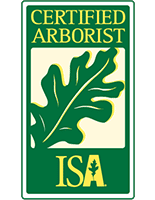As a tree owner, it’s crucial to recognize the signs of a dying tree early on to take appropriate measures and save its life. Trees add beauty and value to our surroundings, but they are susceptible to various issues that can lead to their demise. In this comprehensive guide, we’ll explore the top indicators of a dying tree and provide actionable steps to preserve and nurture its health.
-
- Leaf Discoloration and Its Implications: One of the most evident signs of a dying tree is the discoloration of its leaves. If you notice leaves turning brown, yellow, or displaying unusual colors, it’s time to pay attention. Leaf discoloration often indicates stress or disease in the tree. Different tree species may exhibit varying leaf symptoms, so understanding your tree’s normal appearance is essential to spot any changes. Promptly identifying the underlying cause of leaf discoloration can prevent further decline and potentially save the tree.
- Wilting Leaves: A Cry for Help:Wilting leaves are a distress signal from your tree, indicating that it’s not receiving adequate water or nutrients. When the leaves appear droopy or start falling off prematurely, it’s crucial to act swiftly. Watering the tree deeply and mulching around its base can help retain soil moisture and improve root health. However, wilting leaves can also result from pest infestations or root problems. Identifying the root cause and providing appropriate treatment is vital to rejuvenating the tree and restoring its vitality.
- Decoding Bare Branches and Its Remedies:A tree with bare branches during the growing season is cause for concern. The loss of leaves signifies severe stress, and identifying the reasons behind it is crucial. Drought, disease, or environmental factors can lead to leaf loss. Consulting a certified arborist can help diagnose the issue and recommend the best course of action. Timely pruning and providing the tree with the right nutrients can encourage new growth and revive the tree’s health.
- Fungal Growth: Unveiling the Hidden Dangers:The presence of fungi or mold on the tree’s trunk or surrounding soil indicates decay or rot within the tree. Fungal growth weakens the tree’s structure and poses a significant risk of falling branches. Identifying the specific fungus and its severity is essential to take appropriate action. Properly pruning affected branches and improving tree vigor through fertilization can aid in managing fungal diseases. Implementing preventive measures like improving drainage and reducing excess moisture can also safeguard your tree from future fungal attacks.
- Pest Infestations and Their Impact: Insects and pests can wreak havoc on a tree’s health, causing leaves to wither, bark to crack, and branches to die. Early detection is key to preventing infestations from spreading and causing irreversible damage. Introducing beneficial insects, using organic pesticides, or employing other pest management techniques can help control the problem. Regular inspections and maintaining overall tree health can strengthen its defenses against harmful pests.
- Cankers and Lesions: Cankers or lesions on a tree’s trunk or branches are entry points for pathogens. Treating wounds promptly and ensuring proper pruning practices can minimize the risk of infection and promote healing.
A dying tree can be saved with timely intervention and the right care. Vigilance, regular maintenance, and consulting with experts can prevent irreversible damage and ensure the continued beauty and value of your precious arbor for generations to come. Call Integrity Tree Care today to evaluate your dying tree”s health.



